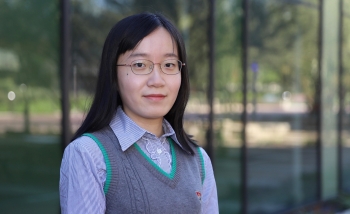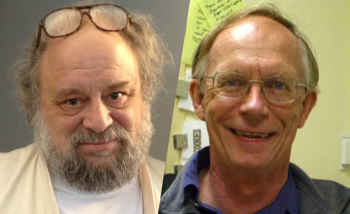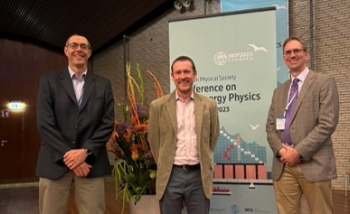It’s been a big year for Perimeter’s Pedro Vieira. He recently won a Sloan Fellowship. Early career researchers who win Sloan Fellowships are widely viewed as people to keep an eye on, and with good reason: 42 of them have gone on to win Nobel Prizes.
Now, Vieira’s been awarded the 2015 Gribov Medal, which honours outstanding work in theoretical particle physics or field theory by a physicist who is under 35 years old. The prestigious award is given once every two years by the European Physical Society.
In other words, Vieira – who is just 32 – has now won a top award for young physicists on two continents.
“We are delighted to see Pedro so widely recognized,” says Perimeter Faculty Chair Robert Myers. “He has a rare combination of mathematical talent and physical intuition, and he is doing remarkable work.”
The European Physical Society cited Vieira “for his groundbreaking contributions to the determination of the exact spectrum of anomalous dimensions of N=4 supersymmetric Yang Mills theory and scattering amplitudes, for any interaction strength.”
In seeking exact solutions in four dimensions, Vieira is tackling the toughest and most long-standing set of problems in quantum field theory.
His method has been to use a mathematical technique called holography to translate questions about four-dimensional field theories into questions about two-dimensional (2D) string theories. That makes it possible for him to tackle the questions through the use of integrability, a powerful mathematical technique for exactly solving 2D theories. Holography then relates the solution in two dimensions back to a solution in four dimensions.
It requires tremendous mathematical prowess and a rare physical intuition to follow the flow of ideas up and down the dimensions and through different theoretical lenses.
“Pedro is truly an extraordinary young scientist,” says Myers. “He and his collaborators have opened a path to a richer conceptual and practical understanding of quantum field theory – which is the language in which particle physics, condensed matter physics, and much of cosmology is written. We’re delighted to have Pedro here at Perimeter, and we expect you’ll be hearing more from him in the future.”
Further exploration
About PI
Perimeter Institute is the world’s largest research hub devoted to theoretical physics. The independent Institute was founded in 1999 to foster breakthroughs in the fundamental understanding of our universe, from the smallest particles to the entire cosmos. Research at Perimeter is motivated by the understanding that fundamental science advances human knowledge and catalyzes innovation, and that today’s theoretical physics is tomorrow’s technology. Located in the Region of Waterloo, the not-for-profit Institute is a unique public-private endeavour, including the Governments of Ontario and Canada, that enables cutting-edge research, trains the next generation of scientific pioneers, and shares the power of physics through award-winning educational outreach and public engagement.
You might be interested in




